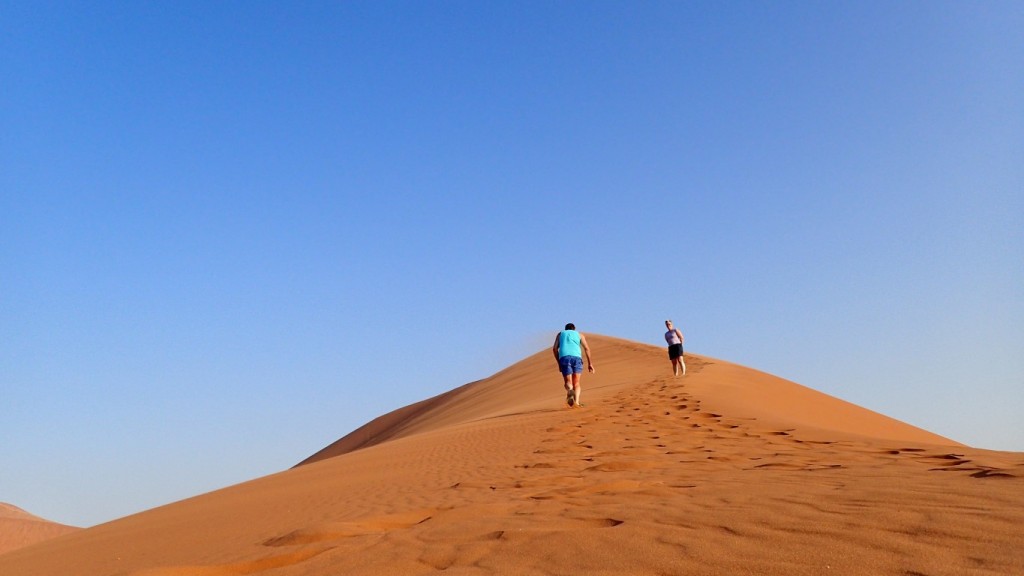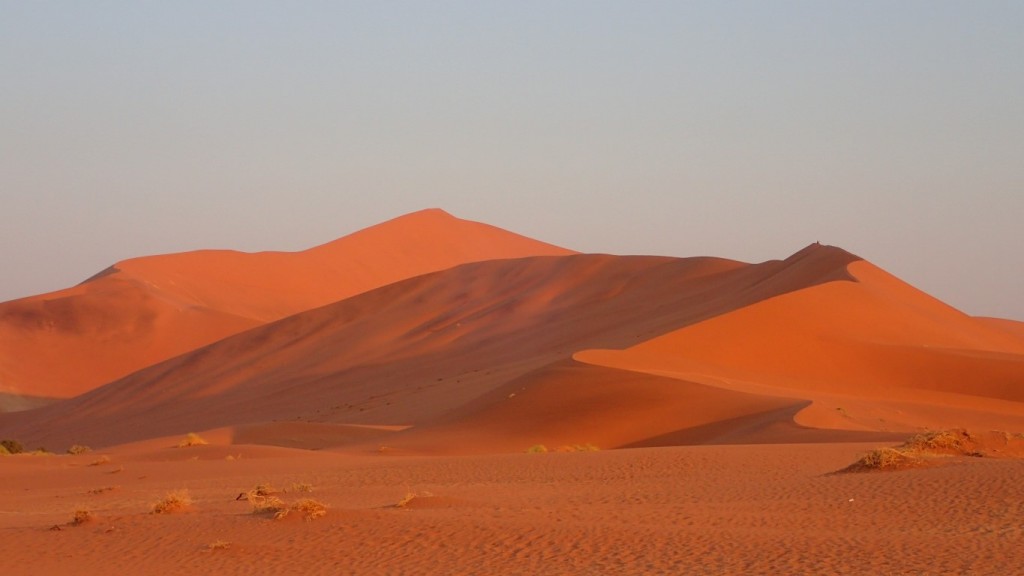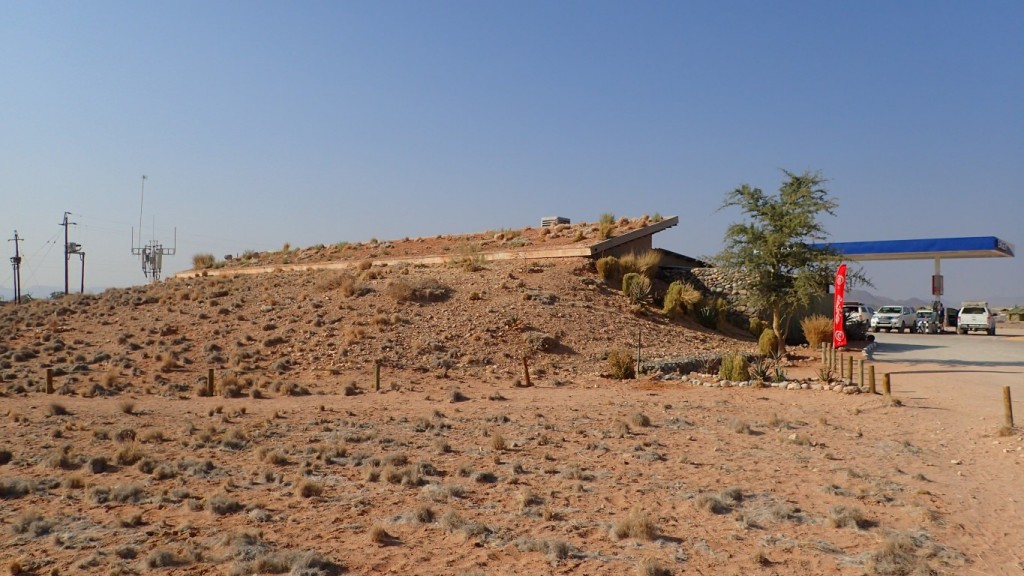The sand dunes around Sossusvlei (the pan or floor of the dunes) are reputed to be the highest in the world, and they are definitely among the most striking and well-preserved. The sparse vegetation on most of them suggests that they are still in motion, and driving on the sealed roads with wave-like dunes on both sides, it feels like the red sand is moving, like the sea. Only this is a sea of slow-moving sand, rather than fast-moving water.
The entrance to the Namib-Naukluft Park at Sesriem is 60kms from Sossusvlei. Inside the park is a campground and some up-market accommodation. In our usual ad-hoc style, we hadn’t pre-booked a spot in the campground and it was full by lunchtime, so we ended up at the overflow campground with just a couple of other vehicles. Probably much quieter than the main campground, but a long walk to the showers and toilets. We set up our tent then drove the 60+ kms to get to the dunes. Staying inside the park means an extra hour’s access to the dunes in the morning, and an extra hour in the afternoon. The park’s main gates open at 6.45am and close at 5.15pm, so anyone not staying in the park doesn’t get in before sunrise, and has to be out well before sunset. The inside gate opens at 5.45am and close at 6.15pm, which in theory gives people time to get down to the dunes and watch the sun rise, or watch the sun set and then drive back before the inside gate is closed.
Not being morning people, the idea of getting up in the dark and traipsing down to the dunes with a convoy of other vehicles held absolutely no appeal, but the idea of watching the sun set over the tall red dunes in the desert sounded pretty nice, so we opted to do that. We stopped at Dune 45, at the 45km mark, and walked about halfway up, watching the wind blow sand over the footprints of previous visitors. It feels like the dunes are in constant motion. A lot of the area is inaccessible in order to preserve the area, but a few dunes can be visited. There is a sealed 60km road, then 4kms of sand, which is only accessible to 4WD vehicles. But that was no problem to us, ‘cos we have a Toyota Hilux 4WD.
At least, it was no problem until we got it bogged in sand on the way back. Drat! And then we had one of those adventures-without-really-meaning-to. We had left ourselves exactly enough time to drive back on the sandy bit, watch the sun set over the dunes, then drive the 60kms back while sticking to the 60km speed limit, so that we could be back at the inside gate before 6.15pm. Getting stuck in sand was not part of the plan.
So … let the tyres down a bit, no go. Let them down a bit more, dig out all the sand from the middle of the car, start the car in 2nd gear … success! Then we had to re-inflate the tyres once we were back on the sealed road … but wait! One of the tyres is leaking! More pumping, more lost time, finally back on the road, needing to cover the 60kms in 45 minutes. In all the excitement, we completely missed sunset, although the colours in the dusky sky before it got completely dark were beautiful. So we zapped those 60kms to the gate, going just a bit over the speed limit. Okay, probably quite a lot over the speed limit. Passed a herd of some kind of antelopey-thingy close to the road, and then every bush, sign and stone marker looked like more wildlife that we needed to not hit. Passed a stationary car about 15kms from the gate … what were they doing, and why were they still in the park? No time to stop, but that car got going and followed us back. We made it with about 90 seconds to spare, and the gate-closing guy was there ready to do his thing. Phew, that got the adrenalin pumping! It was only after we were back at our tent that I realised our headlights would have been visible for miles, and he probably would have waited for us, but there wasn’t time to think about that while we were trying to cover the distance. My head was too crowded with watching out for things to avoid hitting, and calculating how much distance we had to cover in the time we had left.
If we had been smarter, we would have gone down to the dunes with our tent in the car and camped down there for the night. A photographer has just won a National Geographic award for a photo she took of one of the dunes at night. Magnificent photo, but the only way she was able to take it was by staying down there well after sunset – here it is, with other prize-winning photos.
There is a canyon at Sesriem, not on the scale of Fish River, but interesting because it gave the village its name. ‘Sesriem’ means six lengths in German – when the canyon was first discovered, it took 6 lengths of rope to get water from the canyon to the surface. Now the canyon is dry, although when it rains, it really, really rains.


